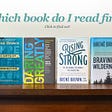snickerDoodle
a place where people come together to share stories through doodles.
snickerDoodlers: Alana Rogers, Alicia Ng, Charlene Chen, Lukas Chen, Roong Vorasucha, Subha Ramkumar, Yvonne Huang
When was the last time you took a deep breath and genuinely appreciated the small things around you? Did you notice the mug gifted by a good friend? The keychain from a spontaneous trip in Denmark? In our busy lives, we often forget to pause to reflect. Our project goal was to create a game that encourages people to find gratitude in their daily lives through self-affirmation and self-reflection. Here comes in snickerDoodle.
snickerDoodle is a Pictionary-inspired guessing game that encourages people to practice self-affirmation and gratitude through doodling — the act of drawing or scribbling can be calming and meditative, which can facilitate introspection and self-reflection. Users can reflect on different aspects of their life through curated prompts. These prompts are centered around gratitude, fostering secondary emotions such as nostalgia and comfort. We also intermixed the prompts with other light-hearted topics to make the persuasive content more approachable.
So, how do we play?
Upon logging in to snickerdoodle, the user will be prompted with a brief community guideline that explains the non-judgmental nature of the platform. They will then pick a prompt from the curated list and doodle their answers on a drawing canvas. When the timer is up, the user will provide one or two keywords to the prompt and write a 200-character-long backstory to the doodle. Lastly, they will choose to post to either the public feed with users around the world or to their selected friends’ circle. Once their post is live, users will be directed to the feed page where they can browse through posts made by other users and make guesses about the doodles based on the accompanying prompts. Once they make the right guesses, users can read the story behind the drawing and reflect on their personal experiences as well.
Theories behind snickerDoodle
Some other features to help ensure maximum efficacy of the app in promoting gratitude are placed throughout the flow. We utilized persuasive techniques that we learned during Persuasive Design course lectures, and they are discussed in more detail below:
- Obfuscation with Misdirection: We wanted our users to not be driven away by an explicitly conveyed intention and instead be incentivized by the usual rewards of a gaming experience.
- Intermixing: In order to keep the prompts from all being related to gratitude and thus making the intention plain or gaming experience monotone, we decided to intersperse the gratitude invoking prompts with other fun prompts.
- Social Proof: By introducing a social media component to the game play, users are incentivized to play more and see what others they know are drawing and writing.
- Self Affirmation: Self-Affirmation as a barrier to external threat is something we utilized to strengthen players’ identity of self. By reminding them of what they have (using prompts like “your favorite toy from your childhood” or “best thing about your high school years”) not only do we invoke a sense of gratitude but also a sense of security thus ensuring psychological safety.
snickerDoodle is about storytelling in a space that encourages self reflection, self expression — intending to cultivate a sense of gratitude and mindfulness. We hope that snickerDoodle serves as a reminder of the small things that matter, one doodle at a time.





